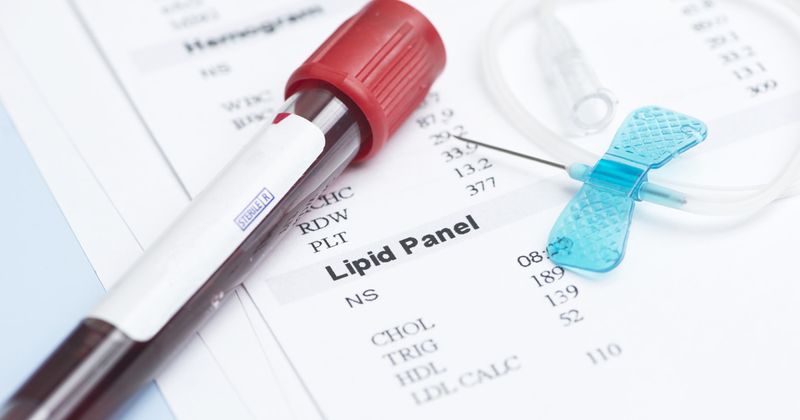Societies call for lipid panels to be CMS main quality measure of LDL control
Key takeaways:
- The NLA and ASPC released a joint perspective on the importance of LDL measurement and control as a CMS quality metric.
- Statin prescription may be a poor metric of LDL control due to risk for low adherence.
Lipid panels, not statin prescription alone, should be reconsidered as a quality and performance measure of LDL control, according to a joint perspective from the National Lipid Association and American Society for Preventive Cardiology.
During a presentation at the National Lipid Association (NLA) Scientific Sessions, Christie M. Ballantyne, MD, FACC, FACP, FAHA, FNLA, chief of the section of cardiovascular research and professor of medicine at Baylor College of Medicine, discussed the history of LDL control as a quality and performance measure according to CMS, the impact of its removal in lieu of statin prescription and the benefits of its reinstatement.

Image: Adobe Stock
Removal of lipid panels as a performance measure

“Does anybody here, when you treat blood pressure, not measure blood pressure in the follow-up visit? We would call that malpractice, right? If you have a patient with diabetes, does anyone believe that once you put them on a therapy, you don’t need to measure HbA1c?” Ballantyne asked during the presentation. “All of these things require a measurement to see if your treatment is effective. ... So it’s incredibly frustrating to take a look at what CMS and [the Healthcare Effectiveness Data and Information Set] has in regard to quality measures.”
According to the CMS guideline, PREV-13: Statin Therapy for the Prevention and Treatment of Cardiovascular Disease, published in December 2021, the measure of cholesterol therapy performance was related to the proportion of patients with atherosclerotic CVD, diabetes, high LDL or familial hypercholesteremia prescribed a statin therapy.
“CMS says, ‘Was someone prescribed a statin?’ It didn’t say, ‘Were they taking a statin?’” Ballantyne said. “If it gets sent to your house every 3 months, does that mean you’re taking the medicine? No, it does not. This issue of the traditional pharmacy adherence where you came in every month, it’s gone. You have no way of knowing if there’s adherence to this medication by simply [asking], did it get mailed to the house?”
From other CMS guidelines, BP therapy performance was measured by the proportion of patients with BP less than 140/90 mm Hg, and for patients with diabetes, good HbA1c control was defined as less than 8%, according to the presentation.
Ballantyne said because of these other performance measures, CMS “recognized that to treat a chronic condition, you need to measure something, except where it comes to lipids. What they’re saying is that you just prescribe a statin and look for 80% adherence. How do we get here?”
“After the 2013 guidelines, which focused on the evidence for statin therapy ... they focused on using statins, which is important, but the interpretation somehow is you didn’t need to measure LDL, which is not what the guidelines actually said,” he said. “Unfortunately, the [American College of Cardiology] was the first organization to take out that you had to measure LDL in their quality metrics. That set off a whole string of events where it was taken out of all quality metrics.”
Ballantyne said CVD mortality in the U.S. has increased since 2015, citing the American Heart Association’s annual Heart Disease and Stroke Statistics update published in Circulation.
As Healio previously reported, CVD-related deaths in the U.S. increased from 874,613 deaths in 2019 to 928,741 in 2020 and represented the largest single-year increase since 2015.
Moreover, within a nationally representative U.S. cohort of more than 600,000 patients with ASCVD, nearly half were not on statin therapy and less than one-quarter were on high-intensity statin therapy, according to a study in the Journal of the American College of Cardiology.
Reinstatement of lipid panels as a quality measure
“If adherence is the single biggest challenge in prevention, shouldn’t we do things to improve adherence?” Ballantyne asked. “The evidence is that measurement of lipids improve adherence. ... When people see their having success, they’re motivated to continue doing what’s giving them success. We have the evidence that it improves adherence and it helps you know if the therapy is working.”
The performance of a lipid panel 4 to 12 weeks after statin initiation or dose adjustment and every 3 to 12 months thereafter is a class IA recommendation, according to the 2018 AHA/ACC joint Guideline for the Management of Blood Cholesterol published in JACC and Circulation.
“By using a team approach by pharmacists and other health care personnel, you can make huge impacts here,” Ballantyne said. “Basically, the totality of evidence and established criteria for performance measures favor reestablishment of an LDL-C measure to improve population-wide control, cardiovascular morbidity and mortality and health equity, because the groups that have the worst treatment of lipids tend to be the underserved communities and they bear the brunt of the greatest increase for cardiovascular mortality.”
References:
- Grundy SM, et al. Circulation. 2018;doi:10.1161/CIR.0000000000000625.
- Grundy SM, et al. J Am Coll Cardiol. 2018;doi:10.1016/j.jacc.2018.11.003.
- Nelson AJ, et al. J Am Coll Cardiol. 2023;doi:10.1016/j.jacc.2022.02.048.
- PREV-13: Statin Therapy for the Prevention and Treatment of Cardiovascular Disease. qpp.cms.gov/docs/QPP_quality_measure_specifications/Web-Interface-Measures/2022_Measure_PREV13_CMSWebInterface_v6.0.pdf. Published December 2021. Accessed June 6, 2023.
- Tsao CW, et al. Circulation. 2023;doi:10.1161/CIR.0000000000001123.
- Virani SS, et al. J Clin Lipidol. 2023;doi:10.1016/j.jacl.2023.02.003.
- Virani SS, et al. Am J Prev Cardiol. 2023;doi:10.1016/j.ajpc.2023.100472.

